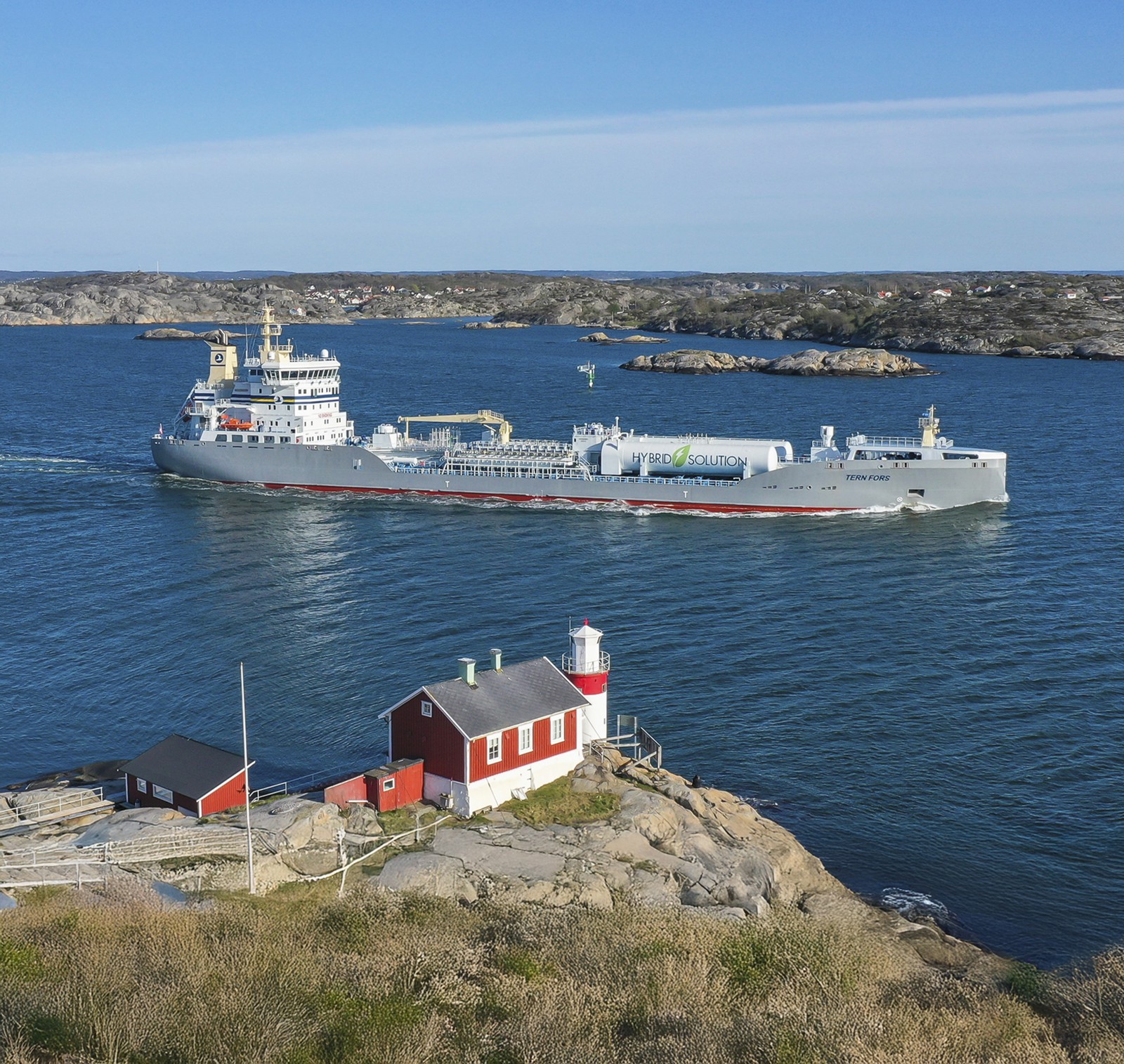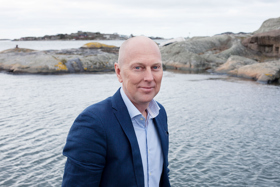
Kongsberg Maritime takes pride in long-lasting relationships with customers that are built on trust. Tärntank is one such customer and these close ties are delivering greener, leaner ships.
-
Photo:©Tärntank
-
Craig TaylorSenior Manager PR & Communications
Tärntank Ship Management AB, based in Donsö, Sweden, has long been a pioneer in integrating advanced green technologies into their fleet of low-emission chemical tankers.
The company’s partnership with Kongsberg Maritime stretches back to the 1970s when the first cargo vessels, designed by Norwegian company Nordvestconsult, joined the fleet. In 2025, Tärntank takes delivery of the most advanced vessel yet, incorporating a range of technologies, including wind power, to ensure it’s ahead of the game when it comes to emission regulations.
Tärntank, and in particular its CEO, Claes Möller, has long been a fan of Nordvestconsult’s ‘NVC’ family of cargo ship designs. They have evolved considerably in recent years and now form a key part of Kongsberg Maritime’s ship design portfolio.

Claes Möller, CEO TärntankWe have developed a long relationship with Kongsberg Maritime, founded on mutual trust, respect and a shared commitment to tackling complex maritime challenges. We like the NVC designs and value the close relationships we have with the ship design team and the numerous technologists across the company.
Tärntank operates a modern chemical tanker fleet, with variations of the Kongsberg Maritime NVC 615 CT design. The development of the earlier ships focused on hull and propeller performance, engine and fuel efficiency, resulting in a remarkable 38 per cent reduction in fuel consumption. The data received from Kongsberg Maritime’s Vessel Insight platform offers valuable opportunities to analyse and determine the next steps in the ongoing collaboration.

Customers appreciate modern, hybrid ships such as the Tern Fors
Subsequent batches of the NVC 615 CT have incorporated batteries, shore power and DC-link systems, leading to an additional 8 per cent fuel saving. Kongsberg Maritime’s automation systems have been key in operating these auxiliary systems efficiently, further enhancing fuel savings.
These modern, hybrid, 15,000 DWT ships, including the Tern Island and the Tern Fors, are popular with customers and crews alike, and have lived up to their performance expectations.The newest vessel, the seventh in the series, will feature wind-assist technology, in the form of four suction sails.
A total of five such vessels have been ordered to date and will play a big part in realising Tärntank’s sustainability goals, aiming for net zero emissions by 2040. Claes says: “The reduced fuel consumption, advanced vessel design, automation systems and digital optimisation all contribute to this ambitious target. The use of electro fuel engines further underlines our commitment to environmental stewardship, and of course the addition of suction sails will make these vessels even more efficient and compliant.”

The latest vessels will feature wind-assist technology
Positive vision of the future where innovation continues to inspire
Looking ahead, Tärntank is preparing for the delivery of the first wind-assisted vessel, with subsequent deliveries scheduled through 2027. Claes Möller says: “The first ship with suction sails will be operational in Europe this summer and will be fully integrated into our Scandinavian trade routes. We’re very excited to embrace wind power as part of Tärntank’s vision for the future, and we’re now looking to the future to see how else we can raise the bar even higher. That includes exploring fuel cell solutions to reform methanol into hydrogen, providing auxiliary power when vessels are at anchor, so our pursuit of an even more efficient fleet never stops.”
Calculating with accuracy
“The decision to integrate wind assist technology was driven by Kongsberg Maritime’s well-researched concepts, demonstrating the potential fuel savings,” says Claes.
“We have a great deal of faith in calculations, which draw on a huge amount of operational data. Over many years of collaboration, Kongsberg Maritime’s theoretical calculations have consistently matched reality and we believe in them wholeheartedly. For instance, when we ordered the first vessels, everything was calculated with the Promas propulsion system. The model tests confirmed that the theoretical figures were spot on, which reinforced our confidence in the Kongsberg Maritime team’s expertise.
And today, these vessels perform exactly as predicted.”However, the design and integration of wind technology posed new challenges, particularly in utilising robust sails capable of withstanding the harsh conditions of the west coast of Norway. Kongsberg Maritime works with all the major wind technology providers, and through its new K-Sail solution can optimise the use of wind technology as part of a fully integrated ship system.
Claes reiterates the importance of detailed calculations in ensuring optimal performance. “Kongsberg Maritime helped us with a comprehensive feasibility study, using NASA wind data from the past 20 years to determine the best type of sails for our trading routes. In the areas we operate we have predominantly westerly winds, so we needed to select a technology suited to those conditions.”
As Tärntank takes delivery of these five new vessels, its fleet will comprise 11 Kongsberg Maritime-designed ships. Per Egil Vedlog, Kongsberg Maritime’s Chief Designer, Ship Design Solutions, sees a growing trend for cleaner, more efficient cargo ships, and has been leading the development of Tärntank’s fleet designs.

Per Egil Vedlog, Kongsberg Maritime’s Chief Designer, Ship Design Solutions Image © Cecilie HatløyWe are embracing the fuel transition and a big desire to adopt sustainable technologies. Our new chemical tanker designs for Tärntank really are the next generation of cargo ship, with a combination of energy saving technologies. The NVC 615 is based on our super-efficient hull form, and features progressive steps to improve efficiency, through the use of methanol fuel, batteries and now wind-assisted propulsion on the final five. These will be highly efficient ships and will have an Energy Efficiency Design Index above 40 per cent below the 2025 Phase 3 requirements.